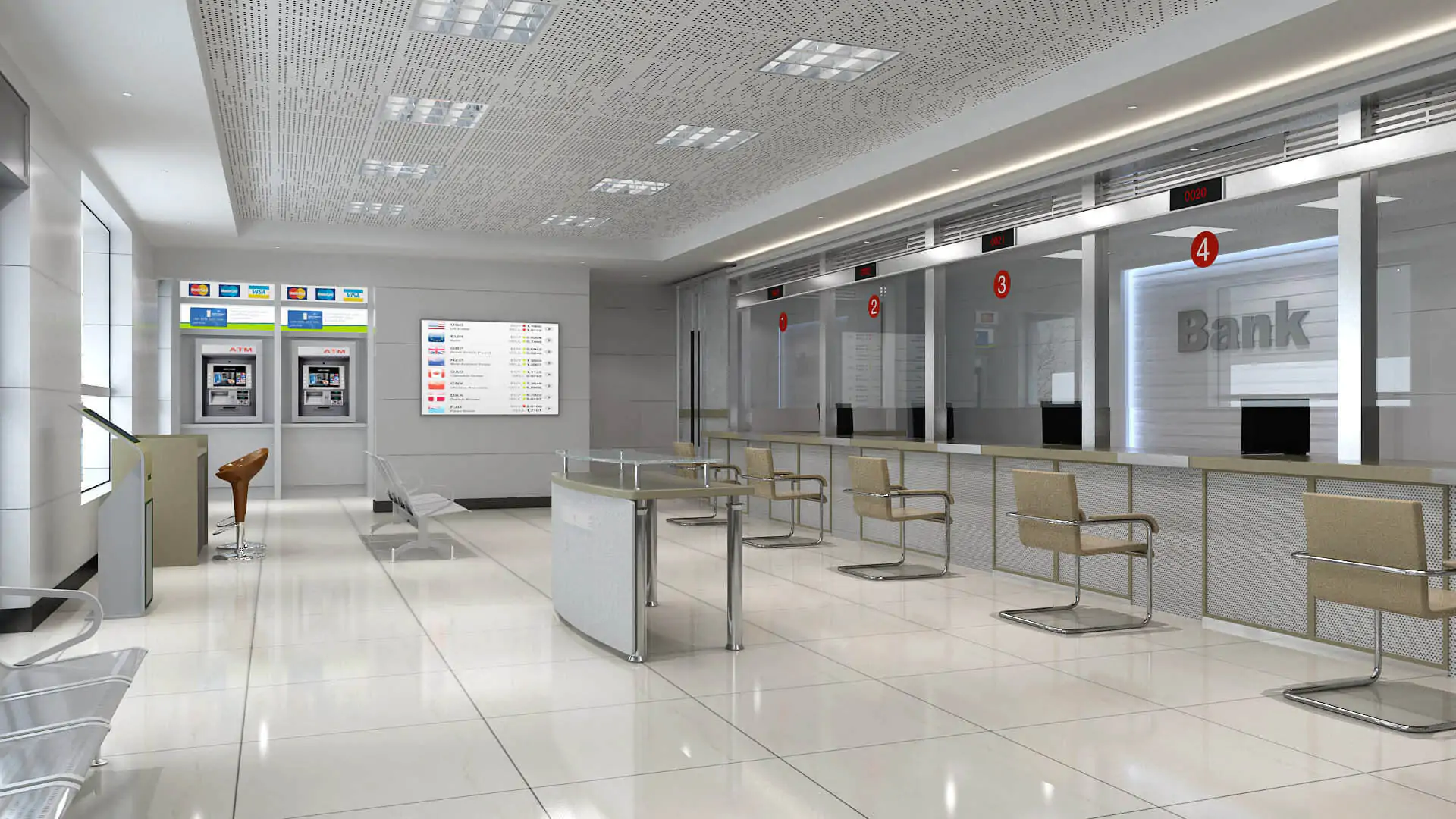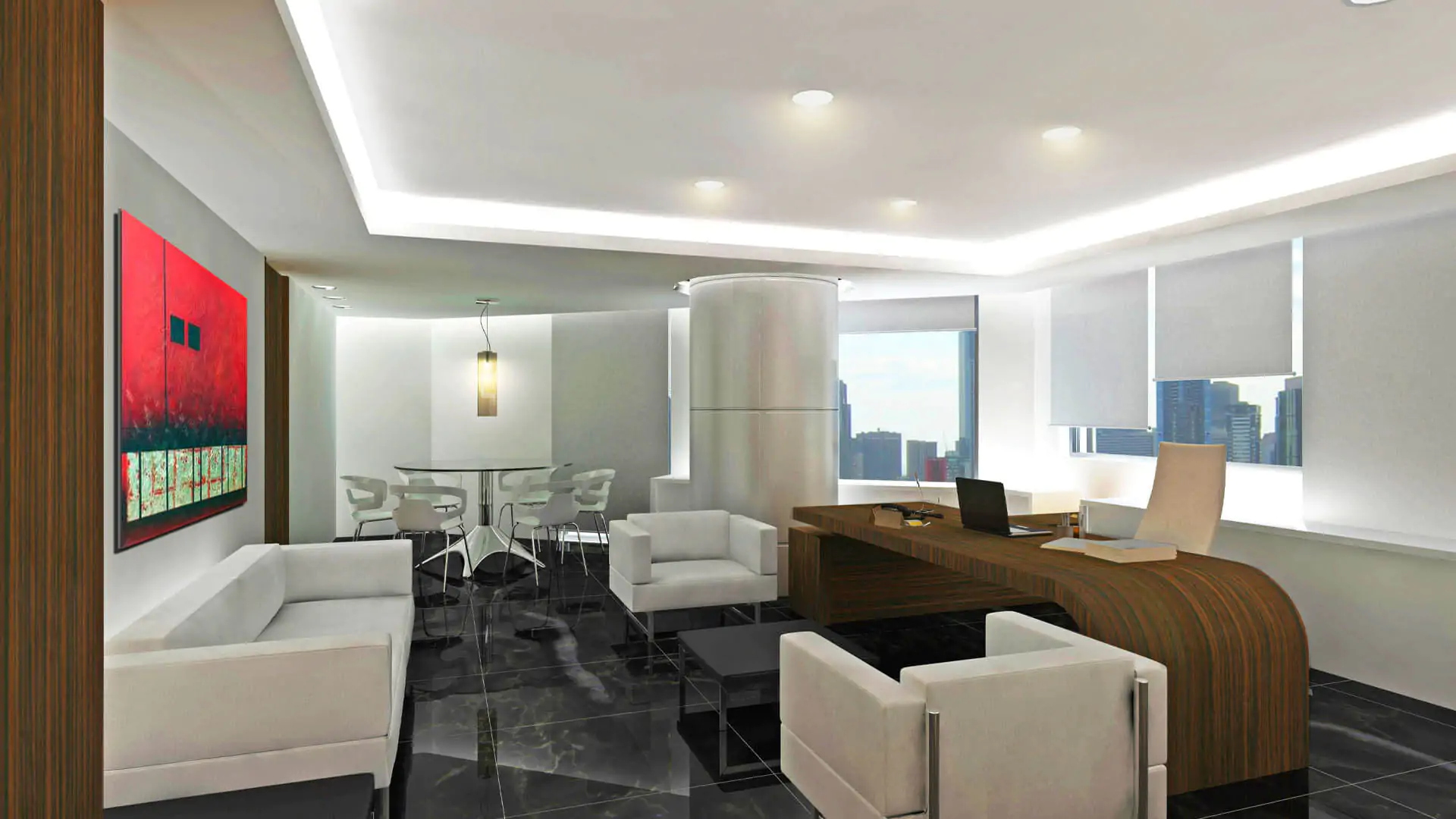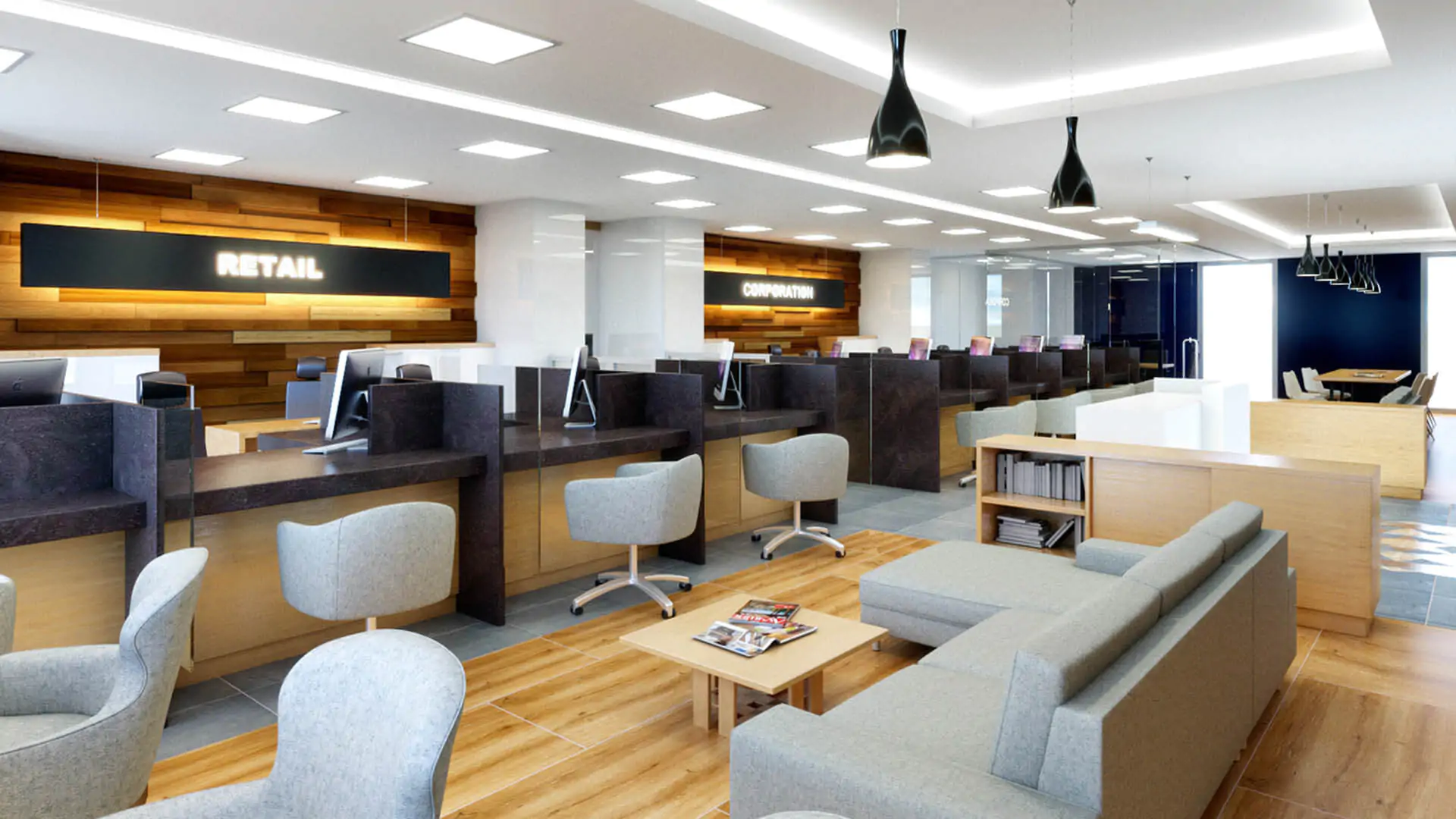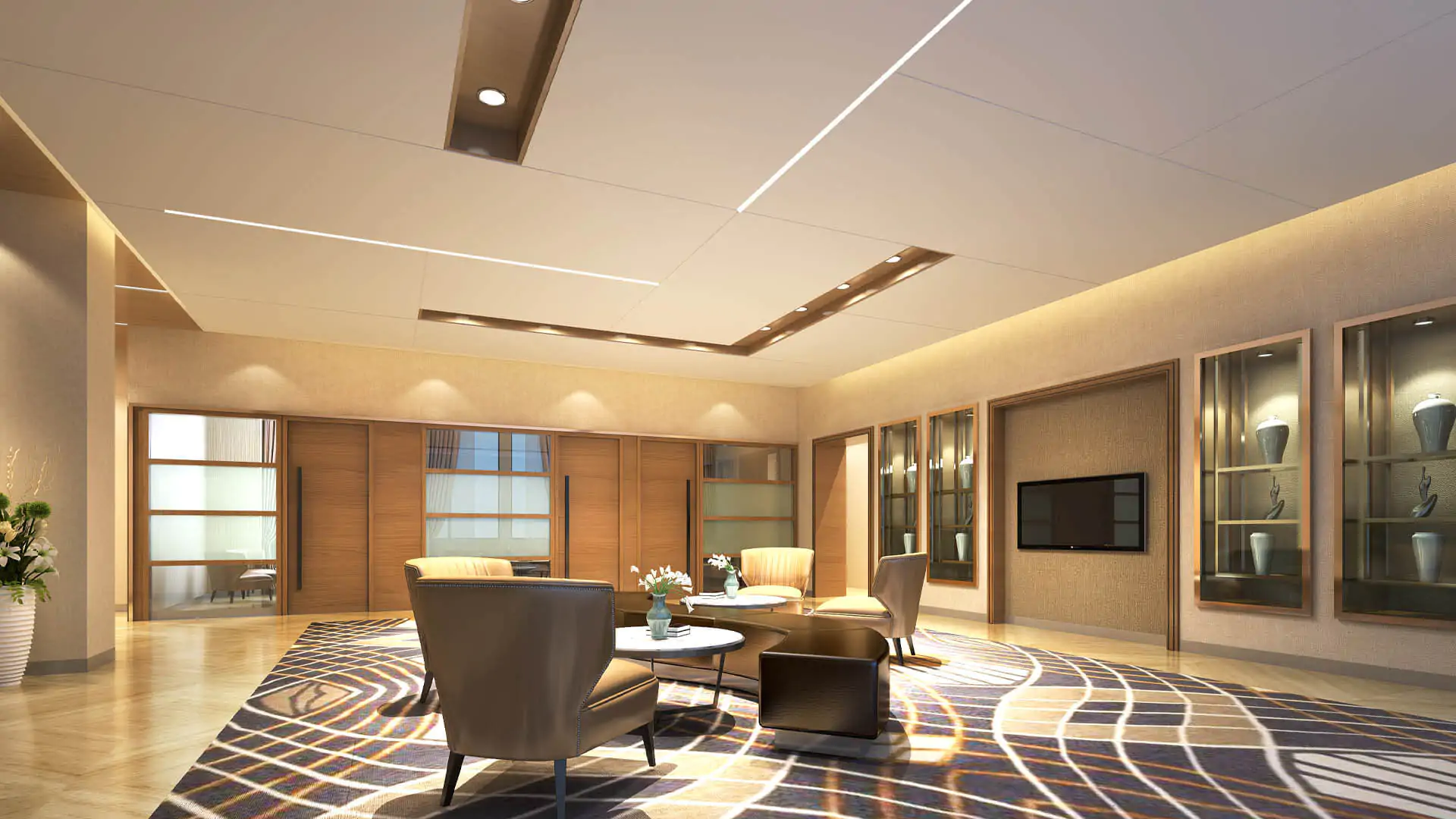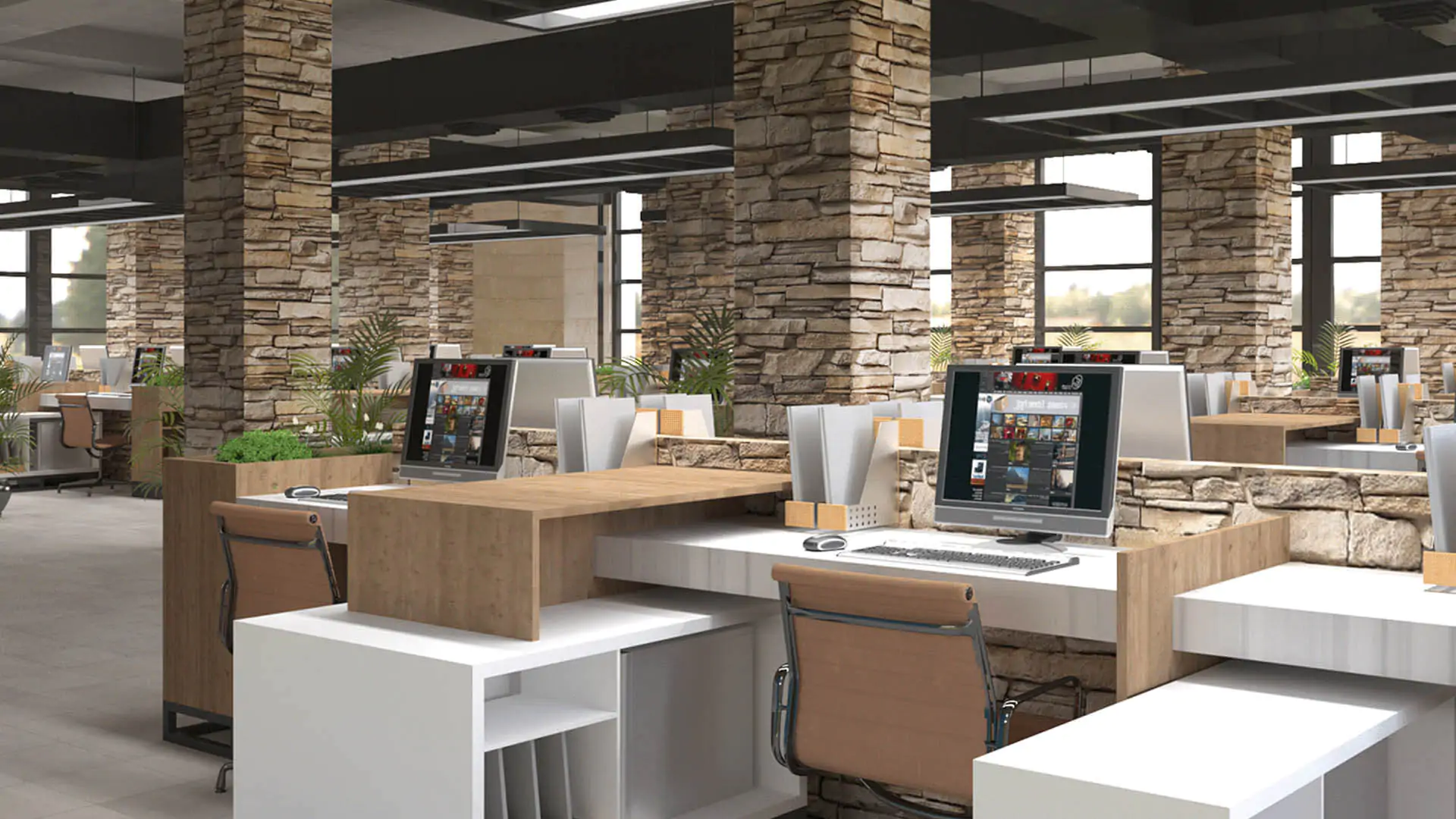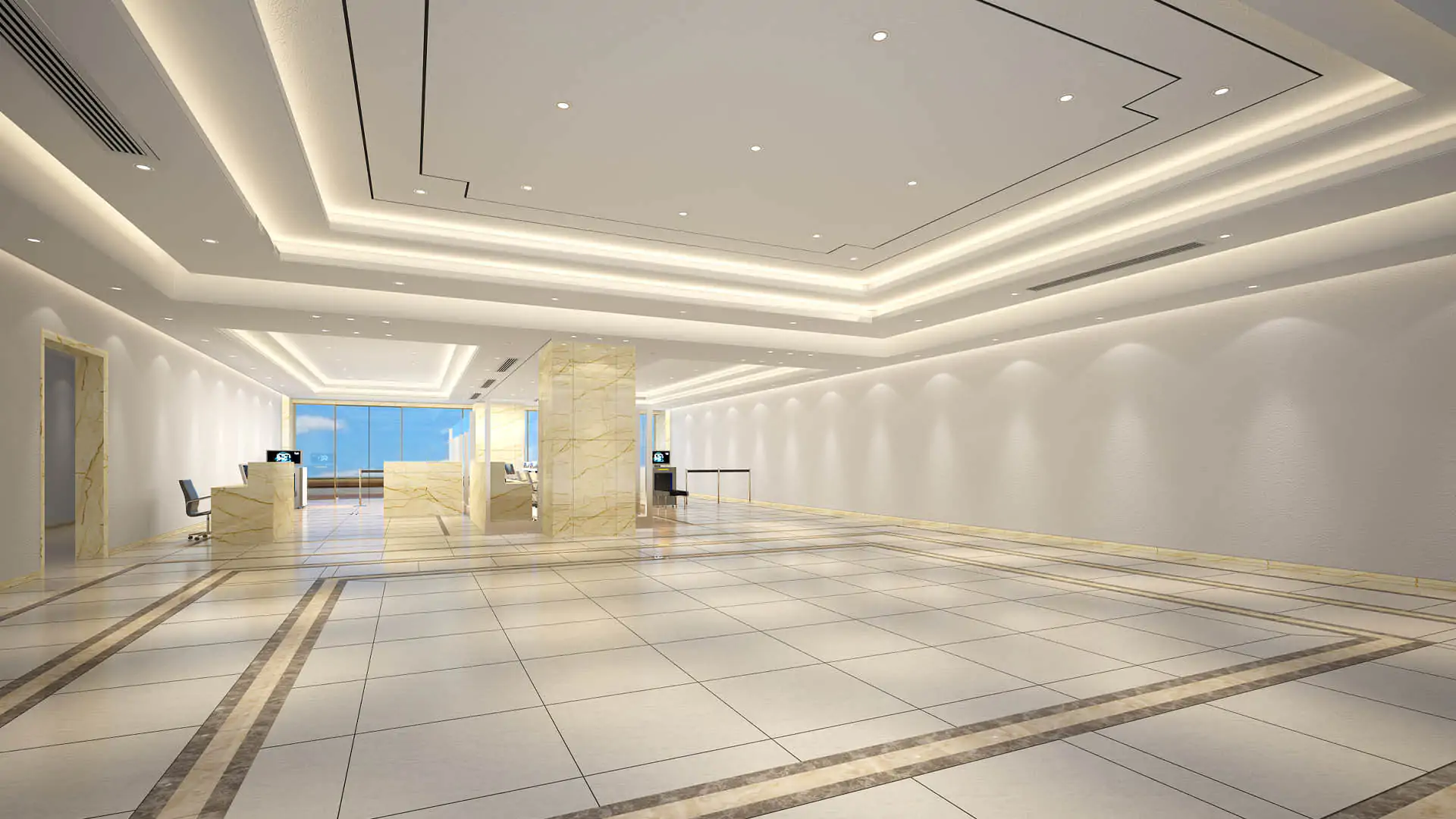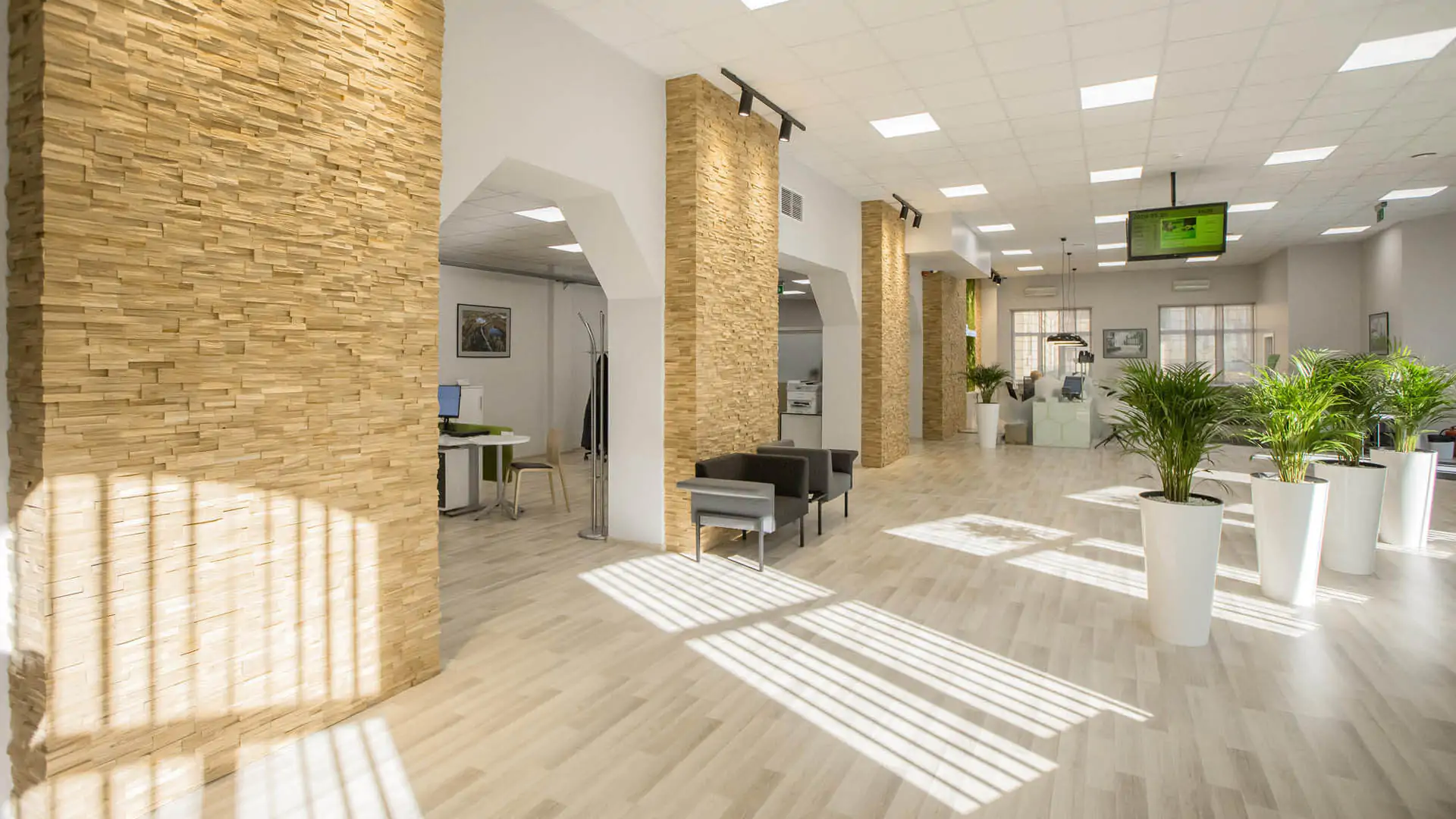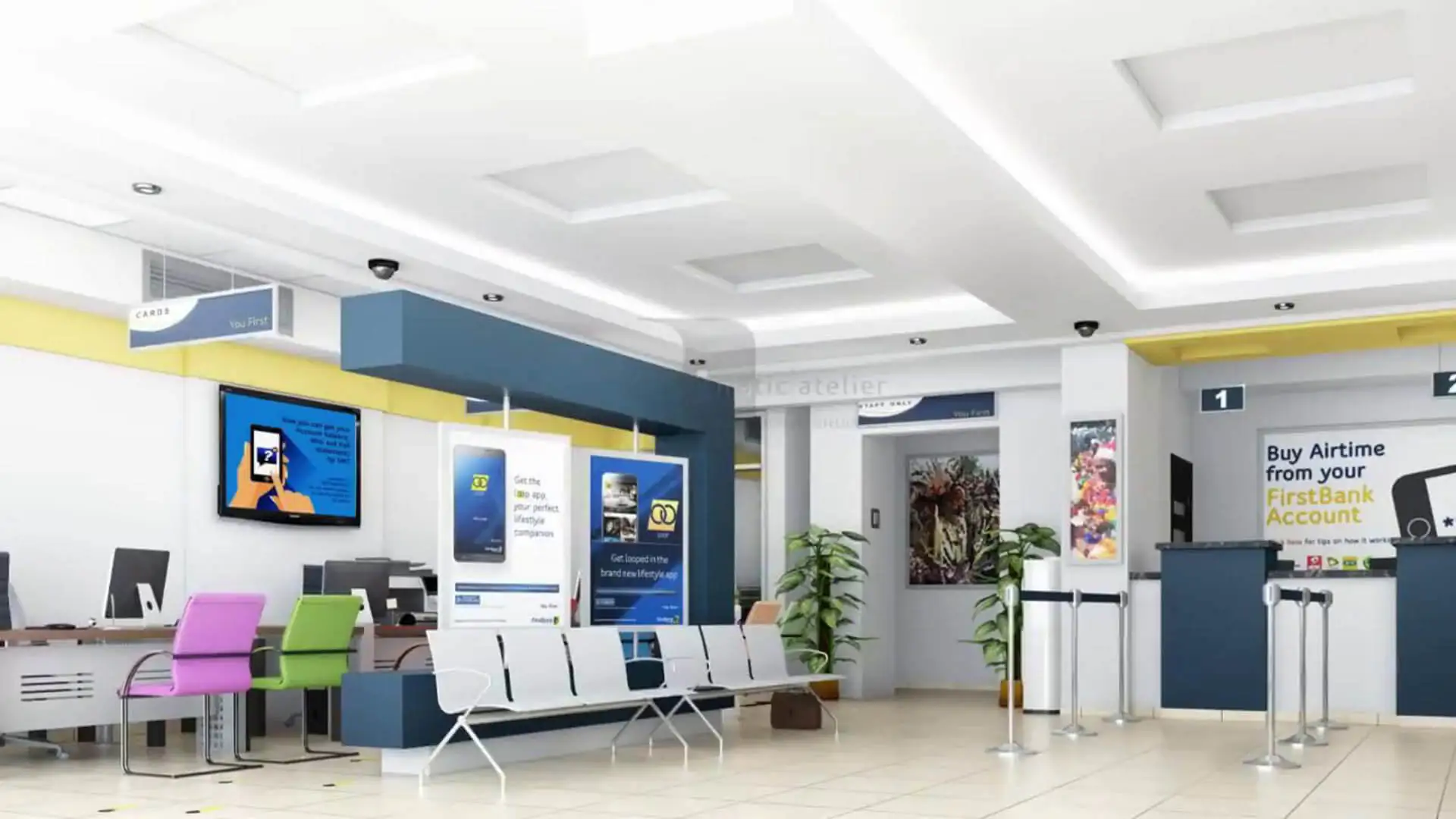Bank Reception Area
The reception area is the first and foremost need for commercial bank design. It is the meeting point for the customer and gives a view of their experiences. The reception area needs to be set up functionally and professionally. Another part is that there should be enough space for customers to move around.
The reception desk needs to be set up in a manner consistent with the bank office interior design so that the entrance and full view of the room can be visible. There should be all the necessary equipment, like phones, computers, and printers, to ensure efficient service. The bank reception interior design will include an impression for the customer.
Bank interior ideas reflect the brand value of the bank. The color scheme of this area should be matched with the brand color. Not only that, but the brand value, proper signage, and the services they provide are also displayed in the reception area. Above all, a reception area creates the first impression of the bank to the customer, so a well-decorated reception is a must.
Waiting Area
The waiting area is an essential part of the latest commercial bank interior. The waiting area must be well organized and provide comfort to the customers. Comfortable seating and ergonomic layout are a must for the waiting area. Also, adequate lighting is important for the waiting space.
Not only that, but the waiting area also reflected the brand value of Bank Interior Design. Brand logos, services, goals, mottos, and achievements can be displayed in one corner of the space with granite marble, or glass materials. Arrangement of magazine and newspaper for the customer is a must, as the customer stays there for a long time. Tea, coffee, or water can add another value to the waiting room and give a good impression to the customer of bank services.
Suitable desks and sofas can be placed in the waiting room of a Bank Waiting Zone Interior Design. Those arrangements create an inviting atmosphere for the customer and enrich the profitability of the bank. If you want to make the most of these facilities in Bangladesh then Circle Interiors Limited is right next to you.
Teller Counter
The teller counter is one of the most critical parts of Banks Architectural Designs. It is the main part of customer interaction with the office staff. It should be designed functionally and remember the experiences of the customers.
Counters should be designed in a large space to maintain the traffic of customers and there should be a vast number of tellers to serve the customer needs. Teller machines should be placed far from one another to maintain the security and privacy of the customers.
The teller room should be constructed with security in mind as well as practicality. To protect both bank personnel and clients, this may entail the use of security cameras, bullet-resistant glass, and other safeguards. In general, a good and organized teller area can support the success of the bank by fostering customer loyalty and trust.
Private Offices
Private offices are an essential part of Bank Interior Design. These should provide customer consultation and interaction with customers and employees. Private offices must reflect the privacy and professionalism of their services.
Proper lighting and air circulation are a must for bank desk interior design. The office should provide a healthy and comfortable environment for customers and staff. Adequate lighting in a private office can create a charming mood for the office staff. Also, the size of the private office is considerable for the comfort of the customers and employees. There should be enough space to accommodate the customer flow. The place must be sound-absorbing to ensure the privacy of customer information.
Another crucial part of a private office is that it must be integrated with modern technology such as computers, video conferencing systems, adjustable lighting and temperature, and other necessary equipment. Above all, a private office is a critical part of commercial bank design. A properly organized private office provides an ergonomic environment for both customers and staff, increasing the brand value of the agency.
Security Features
To safeguard their clients and assets, Modern Commercial Bank’s design frequently includes numerous security systems for their buildings. The use of bullet-resistant glass at teller windows and access doors is a typical security element. This particular glass is made to withstand ballistic strikes, deterring intrusion or theft.
Security camera: For security in all branches CCTV cameras are frequently installed in Bank Branches Interior Design throughout banking facilities to monitor activity, record it, and deter illegal conduct.
Safe teller counters: To guard staff against robbery and other dangers, teller counters are built to withstand bullets and are fitted with security screens.
Accessibility: Banks utilize access control systems to restrict access to particular places within the bank, such as vaults and back rooms.
Alarm systems: To identify unlawful entry or unusual activity, banks use alarm systems. These systems might be linked to local security or law enforcement officers.
Signage
Signage is an essential element of Bank Interior Design. It helps customers to get to the place they want to go. The design of the signage must be clear, easy to understand, and visible from every corner of the office.
Signage should be placed properly to guide customers to different places such as the teller machine, private office, or Bank Manager Room Interior Design
Also, other relevant services. The font size, color or size, way of navigation overall look of the signage should be visible, and easily understandable.
Directional signs direct customers to particular locations within the bank, such as the teller line, ATMs, or customer service desk. Customers can read informational signs to learn crucial details about the bank’s services, rules, and practices in the bank layout plan. Information on account kinds, costs, interest rates, and security protocols may be included in these signs.
Promotional signage is used to promote the bank’s services and goods. It can be credit cards, loans, and investment accounts. branding signs represent the bank’s brand identification. It also gives the area a unified look and feel. Above all, proper signage helps to accommodate the customer flow and adds value to the company’s overall outlook.
Technology Integration
Integration of modern technology for the growth of the banking system is a must and adds clutter-free, easy-to-use services to Commercial bank design ideas.
Customers can receive the most recent information on the bank’s services, special offers, and events. For that, they can use digital signage and interactive displays. These displays can also be used to showcase the bank’s brand and create a more engaging and interactive environment for customers.
Another technology that is gaining popularity in Modern Commercial bank design is mobile banking. This technology can help reduce wait times and improve the overall customer experience. Self-service kiosks are another technology that is useful for Bank Office Interior Design. These kiosks perform to allow customers to perform various banking tasks. They can open a new account, apply for loans, or pay bills.
Easy Accessibility
Easy accessibility is one of the core facts of Bank Interior Design. Bank Interior Ideas may include elevators, teller machines, vendors, or any kind of easy access to their information.
Easy access can be ensured by maintaining a spacious space. Spacious space accommodation helps Customer traffic during pick-up time. This may include the placement of teller machines, ATMs, and other service areas. Not only that, but proper signage also helps to get your wanted information easily in Commercial Bank Interior. Emphasizing customers’ need for commercial banks should be functional, efficient, and easily accessible. With all these opportunities banks can create a safe and proper environment for customers’ money transactions.
Community Space
Community space is becoming an essential part of commercial bank design. Banks can foster a customer-friendly environment by creating a spacious and open area that encourages community bonding and a sense of togetherness.
Bank waiting zone Interior design refers to the community area, which is also provided as an addition to the bank’s brand by covering branded signage, graphics, and materials. Customer needs and preferences are a must in designing the community space. This place can add technology integration, like video conferencing instruments. It also provides the facilities of good air quality, bright lighting, and a proper ergonomic seating area. Additionally, the space has flexible furniture that can easily be rearranged to accommodate different group sizes and activities.
Above all community space is the key concept of modern Bank Reception Interior Design. It can give a chance to the bank to create a warm and inviting environment for the customers and enrich the brand value of the company. With their 13 years of working experience, Circle Interiors Limited will bring a touch of modernity to your life with the latest bank design ideas.
Sustainability
Sustainability of any kind of design is a must. So, in the case of Bank Interior Design sustainability is a core concept. Banks are nowadays seeking sustainable design principles to reduce their environmental impact. An option for installing sustainability in design is the use of environment-friendly materials. These types of materials include low-VOC paints, wooden furniture, or any type of recycled materials. The use of eco-friendly materials on Commercial Bank Interiors can reduce the emissions of carbon dioxide and give a sustainable interior design.
Not only that, banks can use energy-saving light and arrange proper natural light for their space. Energy-efficient HVAC systems can reduce the maintenance cost of energy in commercial bank interiors. Using energy-efficient materials and eco-friendly technologies helps reduce the bank’s operational costs in the long run.
In the case of service provision, banks can also promote sustainability. It is easy to reduce the use of paper and also use recycled material, which can help achieve sustainability in modern interior design for banks. Creating an eco-friendly environment through the incorporation of these facilities in the bank can enhance the interest and engagement of both customers and staff.
In summary, interior design is extremely important in establishing a friendly, expert, and safe place for clients and staff in commercial banks. Commercial banks can enhance the customer experience, raise brand awareness, and encourage efficiency by combining design features including contemporary furniture, strategic lighting, and modern technology. While designing their interiors, banks must take into account the requirements of both their clients and staff, as well as security and accessibility. Bank Interior Design can establish a setting that fosters consumer trust and loyalty with the appropriate design strategy.





